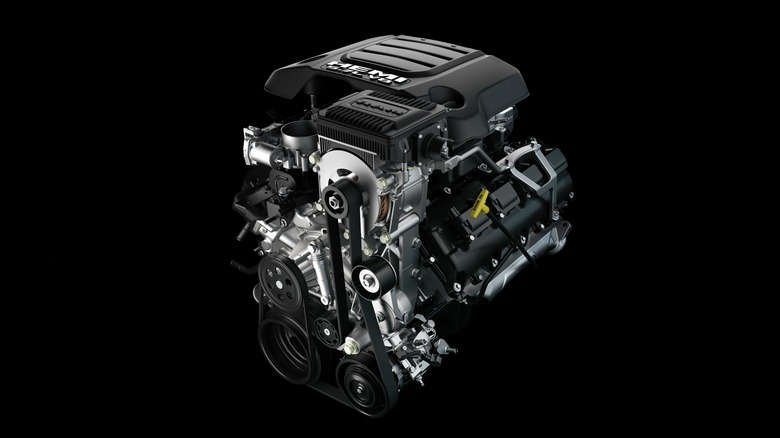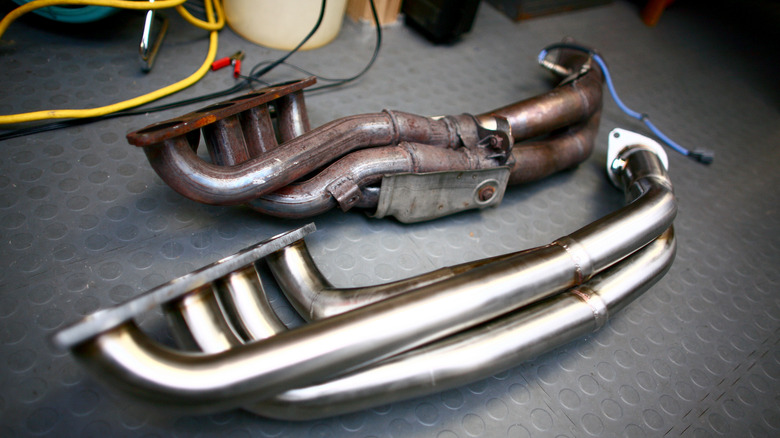Here's How Much Power A Set Of Long-Tube Headers Can Add To A 5.7 HEMI
The 5.7L HEMI is an impressive engine. Its extensive history in Dodge, Chrysler, Ram, and Jeep vehicles has proven it to be a powerful, reliable, and versatile engine that has plenty to offer, even in factory form. When the 5.7L HEMI debuted in Dodge Ram trucks in 2003, it made 345 horsepower and 375 lb-ft of torque, which was followed up by a revised version in 2009 that utilized variable cam timing (VCT) and other notable improvements that refined the existing formula. From 2009 to 2024 the 5.7L HEMI steadily picked up power, with output ranging from 360 to 395 horsepower, depending on the vehicle that it is used in.
While the 5.7L HEMI's factory power is respectable, respectable isn't good enough for a lot of Mopar enthusiasts who are used to seeing other factory HEMI offerings producing north of 1,000 horsepower. While it is difficult to get a 5.7 to that level, there are a number of cost-effective ways to unleash a 5.7L HEMI's full potential and make it much more competitive than it is off the assembly line.
Headers are a crucial part of that equation, as neither the factory SRT8 nor Ram exhaust manifolds were designed to maximize performance. By swapping out the factory exhaust manifolds for a set of performance long-tube headers, it is possible to pick up over 25 horsepower and improve power delivery through the entire rev range.
What are the benefits of installing long-tube headers on a 5.7L HEMI?
The main problem with the factory 5.7L HEMI exhaust manifolds is that they were designed for efficient packaging instead of performance. As a result, aftermarket header options do a better job of providing flow characteristics that take advantage of the exhaust scavenging effect.
The exhaust scavenging effect happens when exhaust gas escapes through the headers, creating a vacuum behind it that simultaneously pulls out more exhaust gasses while also drawing in additional fresh air on the intake side of the engine. That not only generates more power and torque overall but also improves the power and torque curves through the rev range. While harnessing exhaust scavenging is a complicated science that deals with the shape, diameter, and length of the headers, properly designed long-tube headers tend to do the best job of it.
Long-tube headers harness the scavenging effect better when there is more valve overlap involved and at higher RPMs, meaning that the performance tends to improve when paired with other modifications like a more aggressive camshaft. It is also important to pick long-tube headers with the correct diameter for your application, as ones with large diameters can limit the exhaust scavenging effect without the right camshaft setup.
In a test by MotorTrend, a 5.7L HEMI (that was modified with a Comp HRT Stage 2 camshaft) was equipped with both 1 ⅝-inch and 1 ⅞-inch headers to see the power gain from each when compared to the same engine fitted with a factory Ram exhaust manifold. The 1 ⅝-inch headers provided a power gain of 27 horsepower, while the 1 ⅞-inch headers added an additional 36 horsepower. While the upgraded camshaft unquestionably boosted the performance of both headers, the gains are undeniable regardless.

